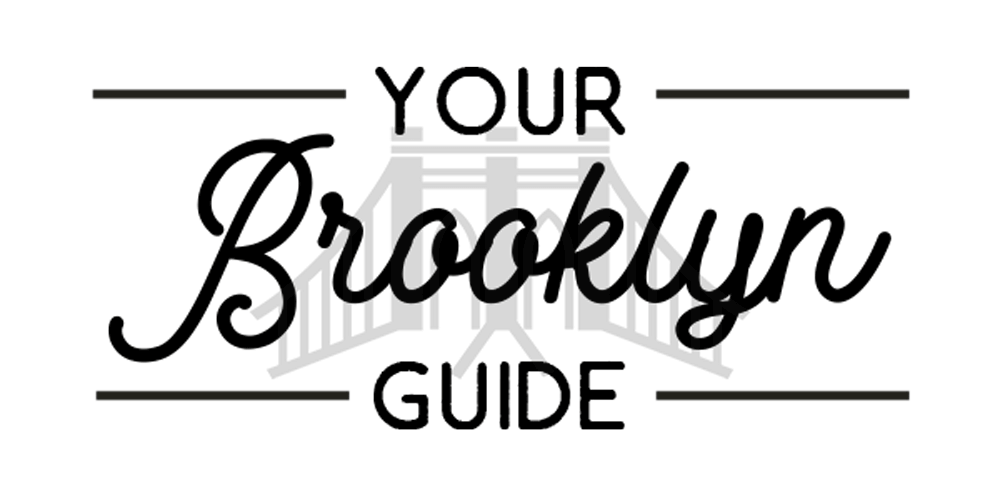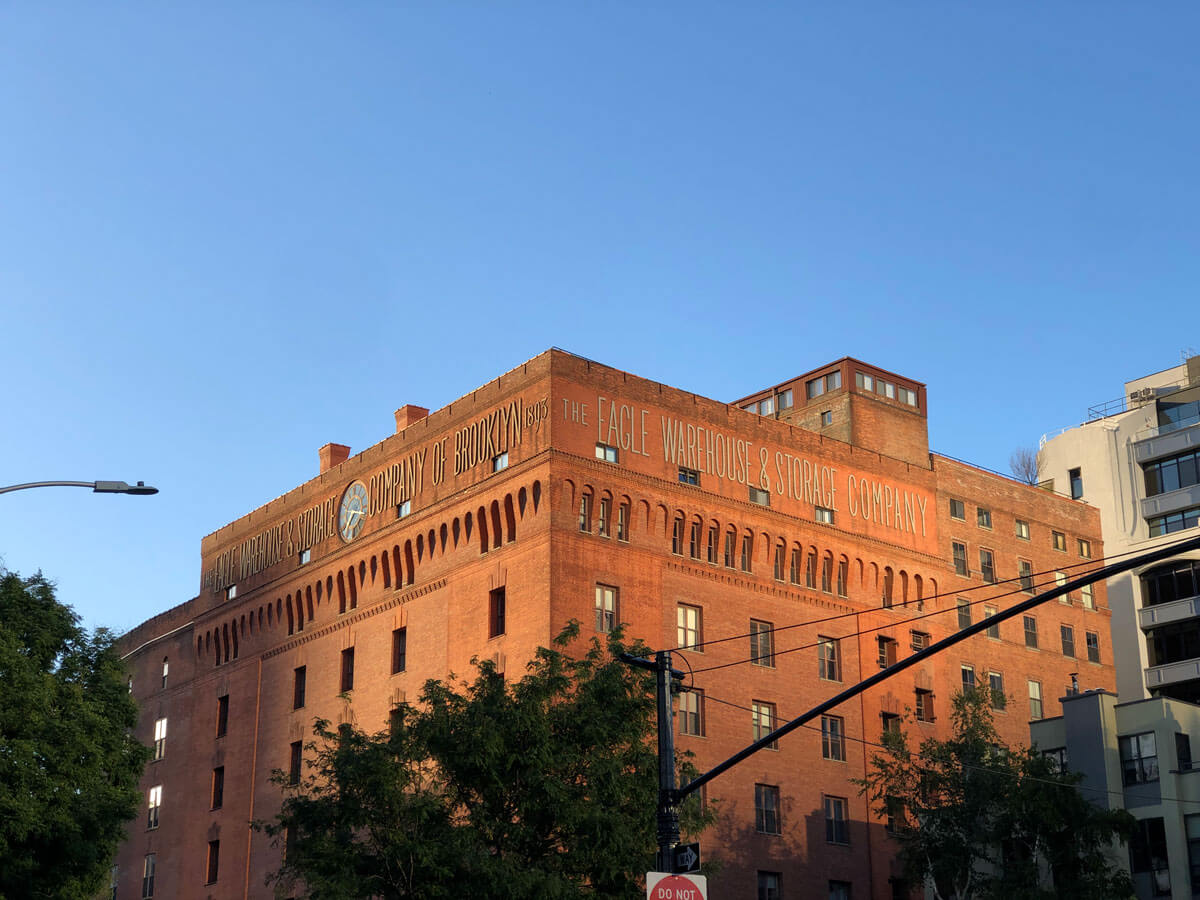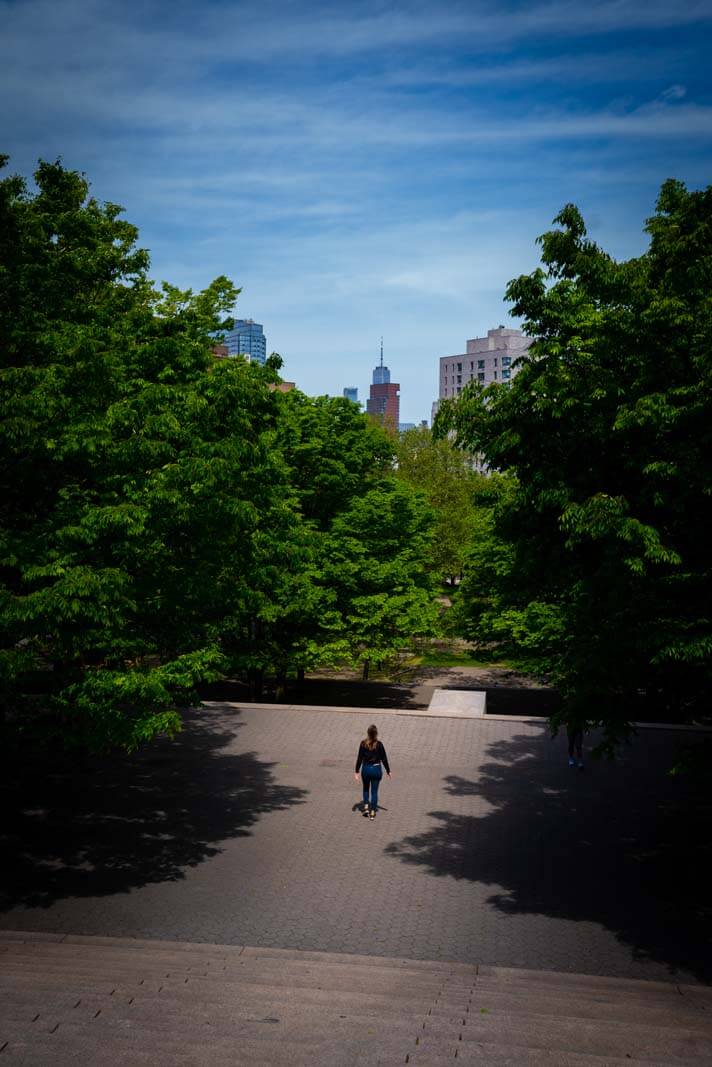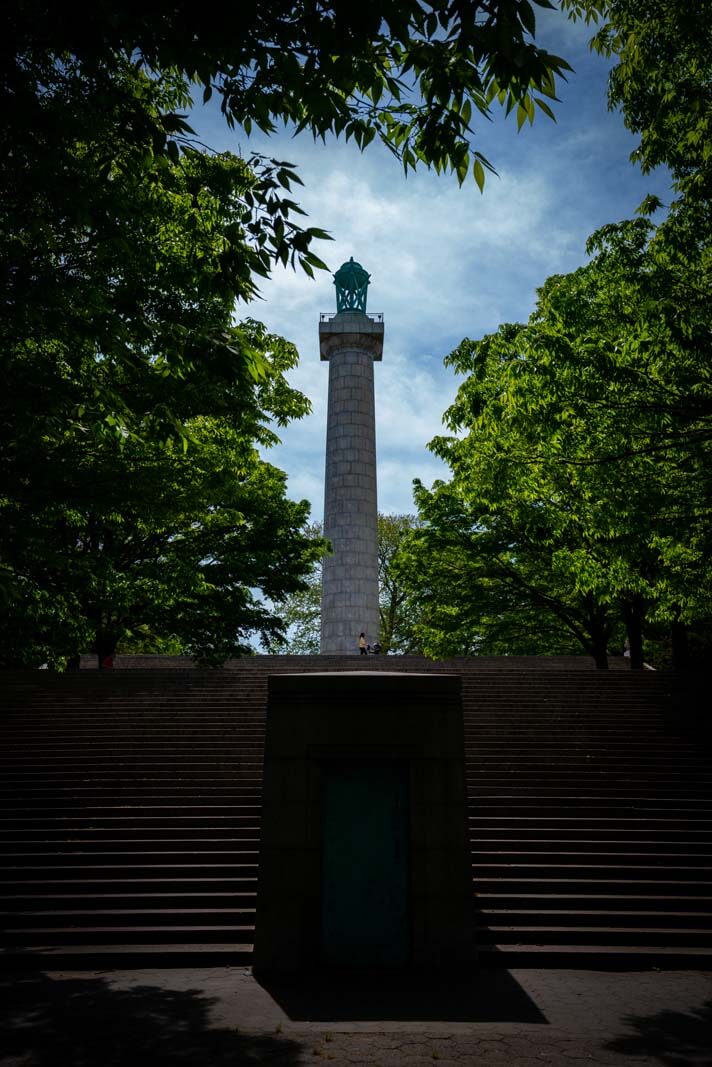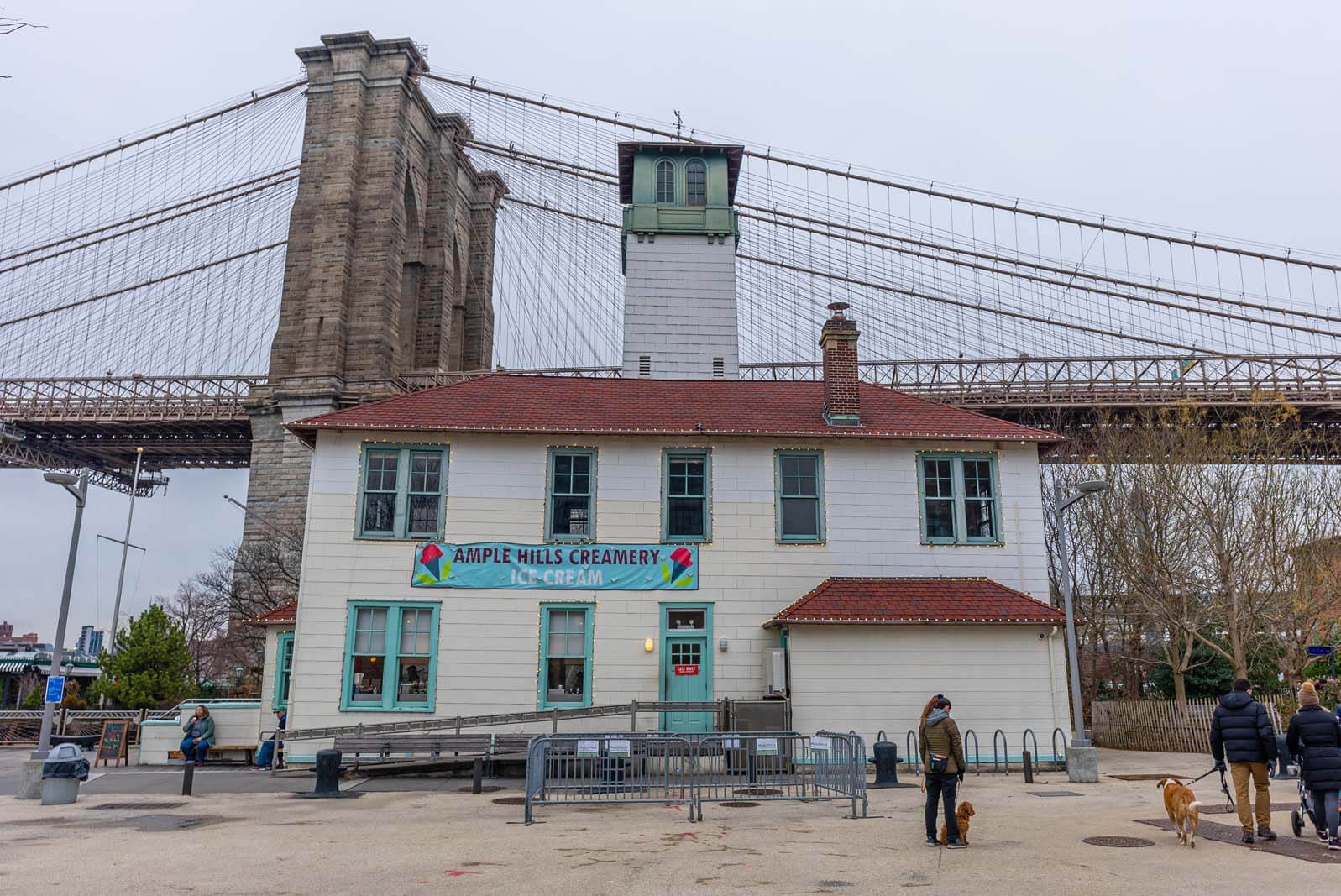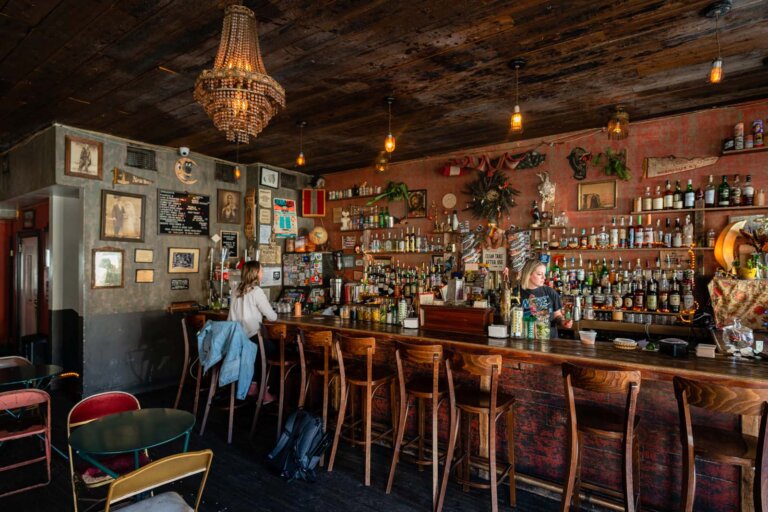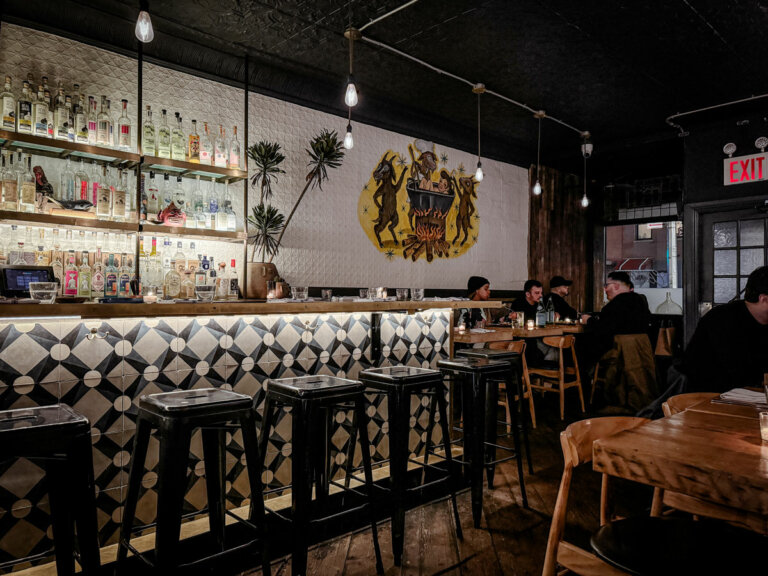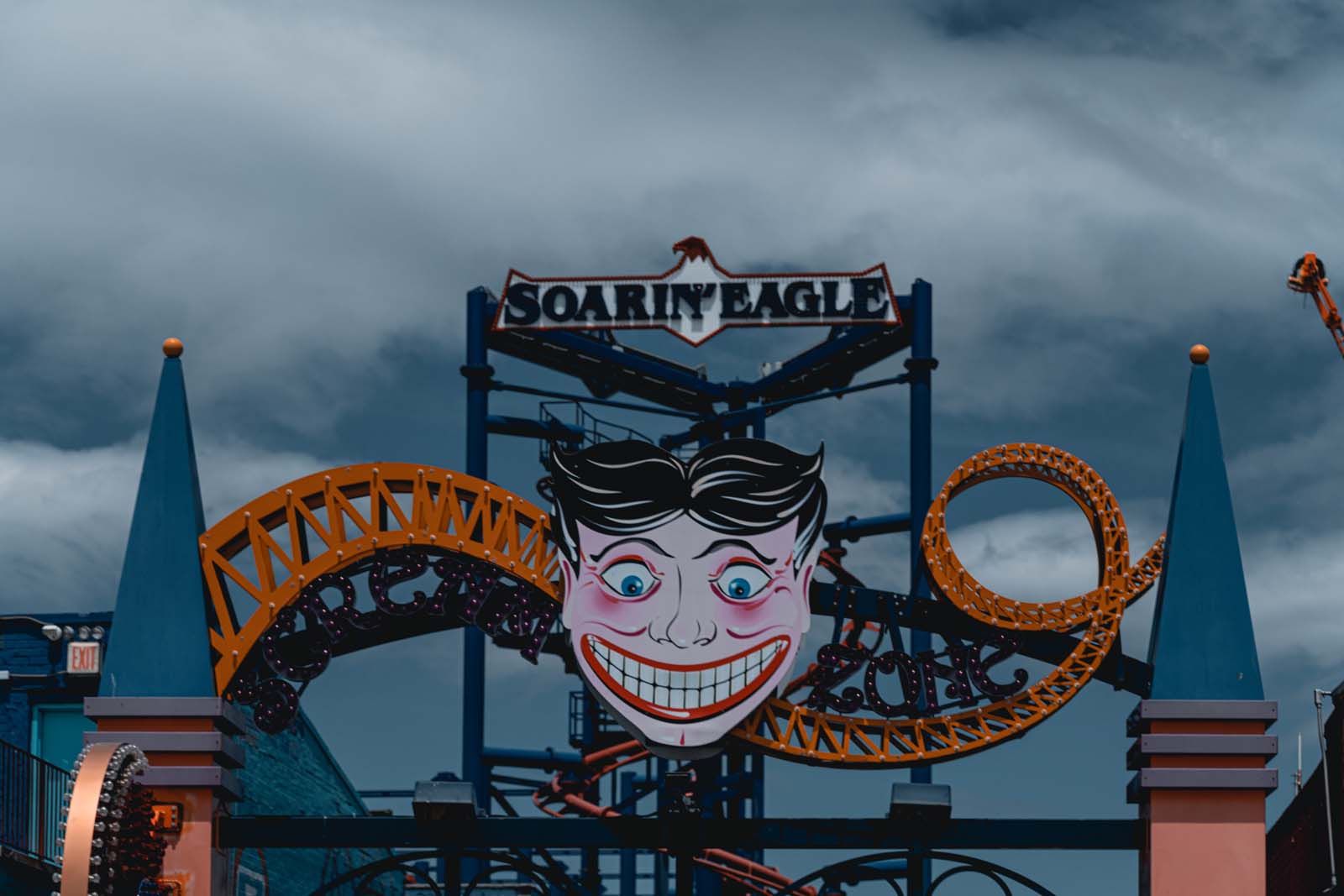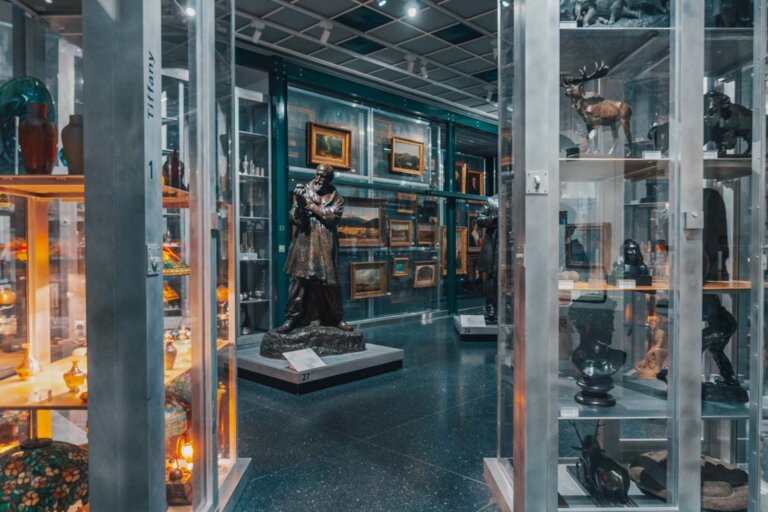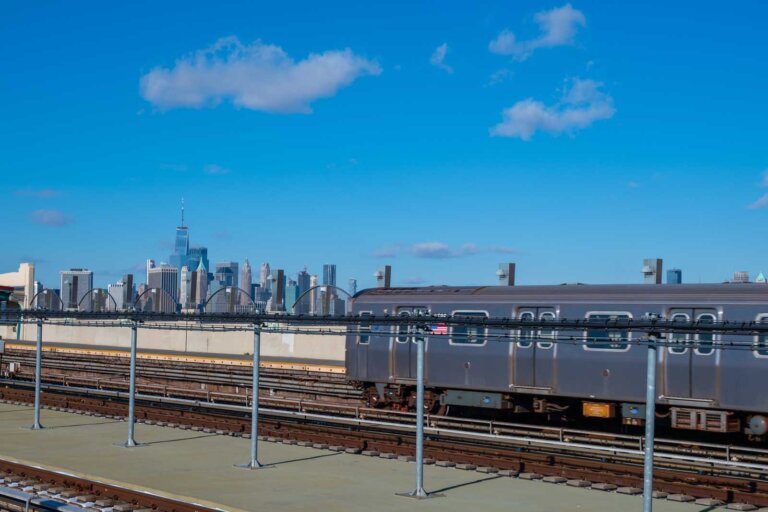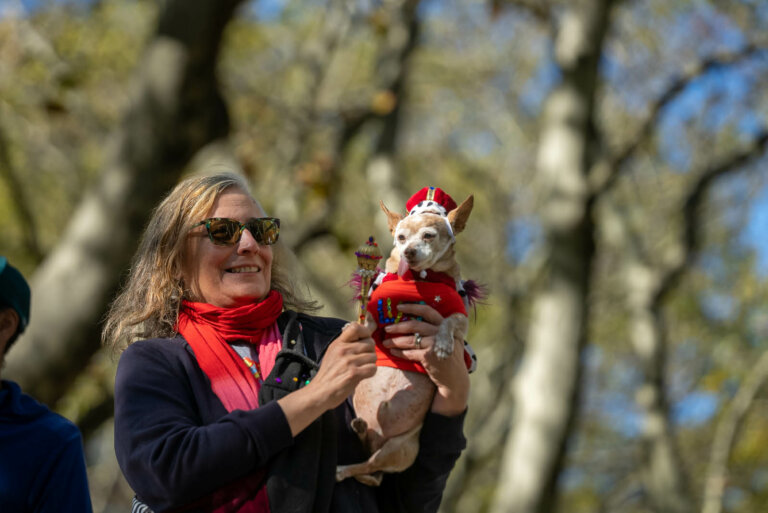Walt Whitman’s Brooklyn: Walking with a Phantom
By Christopher Frederic Lapinel
Walt Whitman (1819-1892) was Brooklyn’s original bearded bohemian. No other writer has ever so affectionately and effectively captured Brooklyn’s essence– warts and all.
Although he moved to the borough at the age of three and would live out his last years in Camden, New Jersey, the Good Gray Poet is the borough’s proudly adopted son.
But, of course, this love went both ways. His feelings for Brooklyn, expressly its bold, scrappy citizens, manifested itself in both his reporting and poetry.
If you’re interested in finding Walt Whitman’s Brooklyn, take time to visit the places he sauntered, breathing the “grateful Brooklyn air.”
Five Fast Facts about Walt Whitman
- Whitman ended formal schooling at age 11 to help his family
- Was an Editor at the Brooklyn Daily Eagle from 1846 to 1848
- Inspired the name for Ample Hills Creamery, one of the best places for ice cream in Brooklyn!
- Published Leaves of Grass living at 99 Ryerson Street in Clinton Hill
- Championed the founding of Fort Greene Park
The Brief Biography of a Kosmos
Walter “Walt” Whitman was an early American poet, essayist, and journalist. He was born May 31, 1819, the second of nine children, to Walter (1789–1855) and Louisa Van Velsor Whitman (1795–1873). The Whitman family had been living at the time in West Hills, in the Town of Huntington, New York.
Due to the family’s financial difficulties, Whitman experienced a difficult childhood. Later in life, he recalled a bright moment when the Marquis de Lafayette lifted him in his arms and kissed his cheek during a July 4th celebration in Brooklyn in 1825.
By age 11, to help support his large family, Whitman left school and apprenticed as a compositor at a newspaper. He held a variety of similar positions, then tried his hand at teaching. Feeling unsatisfied, he returned to journalism. In the meantime, he published his first poetry and fiction, even founded his own newspaper.
By the age of 26, he began his tenure as editor of the Brooklyn Daily Eagle and Kings County Democrat (1846-1848). He was dismissed, however, due to his growing anti-slavery stance.
Then in 1855 with his own money, he published his poetry collection, Leaves of Grass. The book gained critical acclaim after garnering an endorsement from Ralph Waldo Emerson.
Its themes addressed the human condition, humanity’s place in the cosmos, and our relationship with time, all based on Whitman’s observations of ordinary people from all levels of society.
An avowed humanist, his poems bridged transcendentalism and realism, combining elements of both movements to varying degrees in his poetry. Frequently called the father of free verse, he is also notable for the eclecticism of his stylistic influences.
Though his poetry places him amongst the most prominent poets in the American canon, his work remained controversial— even after his death. For example, sections of Leaves of Grass were considered indecent for their unabashed sensuality and homoeroticism.
Whitman would expand and revise the book seven times.
During the American Civil War, Whitman went to Washington, D.C., to find his brother, George, who had been wounded. After he arrived and discovered that George was safe, the suffering of the wounded and dying soldiers affected him. Deciding to stay, he volunteered in hospitals caring for the patients and took work as a civil servant.
In 1865, James Harlan fired Whitman from a clerkship at the Bureau of Indian Affairs for presumed same-sex attraction, based solely on poems and passages in Leaves of Grass. This prompted a friend, William Douglas O’Connor, to publish a tract in Whitman’s defense, The Good Gray Poet.
“We who have looked upon this figure, or listened to that clear, cheerful, vibrating voice, might thrill to think, could we but transcend our age, that we had been thus near to one of the greatest of the sons of men.” He continued: “How some persons can think a book of this sort bad, is clearer to me than it used to be. Swedenborg says that to the devils, perfumes are stinks. I happen to know that some of the vilest abuse Leaves of Grass has received, has come from men of the lowest possible moral life.”
Though Whitman’s enemies remained, his reputation had been salvaged and he moved on to another government post. On the assassination of Abraham Lincoln, Whitman composed two of his best-known poems: O Captain! My Captain! and When Lilacs Last in the Dooryard Bloom’d.
When he died at age 72, on March 26, 1892, his burial was a public event.
Walt Whitman’s Brooklyn
Though many a schoolteacher around the world presents Whitman as America’s Bard, one of the first to codify the American vernacular, this is only partially true. His boisterous, vibrating voice kept its Brooklyn accents and aspirations. In many ways, Brooklyn’s “barbaric yawp” was also his.
And you’re in luck! His jaunty specter will walk the streets with you if you know where to look. And if you take his lead, he’ll give you the grand tour of his adopted home. He literally calls to you in Song of Myself:
Failing to fetch me at first keep encouraged,
Missing me one place search another,
I stop some where waiting for you.
You can begin your search with the Fulton Ferry Landing.
Before the Brooklyn Bridge spanned the East River, the Fulton Ferry carried millions of passengers per year from Manhattan to Brooklyn since 1642. His best-known reflection on our favorite borough is his poem Crossing Brooklyn Ferry which also happens to be one of the best quotes about Brooklyn.
Just as you are refresh’d by the gladness of the river and the
bright flow, I was refresh’d,
Just as you stand and lean on the rail, yet hurry with the swift
current, I stood yet was hurried,
Just as you look on the numberless masts of ships and the thick
stemm’d pipes of steamboats, I look’d.
The poem is a rhapsodic soliloquy, hymnlike in cadence. From eternities’ summit, the narrator admiringly gazes on the roiling passage of human masses. And reverently recording the sublime earthiness of their interactions at Fulton Ferry. Including himself, as well as you.
No doubt the subject was already on Whitman’s mind years earlier, as editor of the Brooklyn Daily Eagle. On August 13, 1847, he published a piece titled Philosophy of Ferries.
Like his poem, written eight years later, the piece addresses the reader as a comrade and strives within the constraints of journalistic style to humanize the sublimely bittersweet conditions of Brooklyn’s workaday life.
This is one reason why, to this day, Whitman embodies its idealized, pluralistic character. Shaped by it, even as it shaped him.
Nearby, on Water Street, one of the best things to do in DUMBO and one of the most delicious stops along Walt Whitman’s Brooklyn you can stop to treat yourself to an ice-cream experience. The company, Ample Hill Creamery, famous for their deliciously inventive ice-cream flavors, is named for a passage in Crossing Brooklyn Ferry: “…Brooklyn of ample hills was mine.”
Traveling southeast, past Cadman Plaza East, you’ll stumble on Walt Whitman Park, a green space that would have delighted the poet. The centerpiece is a fountain. Jets of water shoot from a flat, granite surface—great for jumping through on a muggy day.
Quotes from four of Whitman’s poems inscribe the perimeter. Making your way around, you might be struck by the relevancy of his words, like this advice from To the States: “Resist much, obey little.”
About eight streets a little further southeast you’ll find Myrtle Avenue. This famous avenue figured large in Brooklyn’s development as a city.
On August 15, 1847, Whitman wrote an editorial in celebration of Myrtle Avenue in which remarked:
“This wide and extended thoroughfare seems likely to become one of the most business places in the city of Brooklyn—answering somewhat here to what the Bowery is to N. York.”
He saw the fine houses and shops that had sprung up nearer the waterfront, as well as how Myrtle Avenue transformed as one traveled inland:
“Descending Fort Greene one comes amid a colony of squatters, whose chubby children, and the good-natured brightness of the eyes of many an Irishwoman, tell plainly enough that you are wending your way among the shanties of Emeralders. They are permitted by the owners here, until the ground shall be wanted, to live rent free, as far as the land is concerned. To the right, descending, you catch a view of the burying ground, potter’s field, which is seldom, this summer, without some activity going on inside its low paling; for sickness and death are rife, latterly, among the poor immigrants and the relatives and friends of previous dead come often to linger over the last resting place of those who were dear to them when living.”
Three blocks due north of Myrtle Avenue is the Brooklyn Navy Yard, dedicated in 1801 by President John Adams. The two-hundred-acre Navy Yard served as a crucial United States shipbuilding facility. It brought money, people, and new social mores to Brooklyn.
In June of 1846, Whitman and a large crowd of Brooklynites watched the launch of the U.S.S. Albany. Whitman reported that sixty thousand people in attendance.
“We were somewhat surprised to notice how great a portion (more than half, it seemed to us) of this crowd were ladies and children. Both these sweet classes, however, are noted for their curiosity; and we suppose that explains the wonder. Anyhow, they enlivened the streets with their presence, and made a goodly sight to look upon.”
By mid-century, the Navy Yard employed nearly six thousand. Its economic strength led to developments beyond the yard itself. Nearby Vinegar Hill, between Fulton Ferry and the Navy Yards, grew dramatically.
By 1850 its distilleries provided Brooklyn’s population with bootleg alcohol.
When Brooklyn became a city in 1837 it was divided into nine wards and just east of the Brooklyn Navy Yard lay the great the Ninth Ward, which comprised much of what we now call Bedford-Stuyvesant, Crown Heights, and Prospect Heights.
Geographically extensive, the Ninth Ward was also economically and racially diverse. Home to both the White, gentrified suburb of Bedford and two of the first free Black neighborhoods in the nation: Weeksville and Carrsville. Founded by James Weeks in the 1830s, Weeksville was the larger and more influential of the two.
The Daily Eagle reported in March 1846 that at the Carrsville schoolhouse, the Colored Voters of the Ninth Ward held a large meeting. James Weeks led it. Those in attendance resolved that “the disfranchisement of a portion of the citizens of the State leaves a void in our democratic system of government,” which acts as an impenetrable barrier to progress.
“There is no more rapidly improving portion of this city than in the Ninth Ward, in the vicinity of Bedford,” Whitman wrote late in summer the same year.
Just a bit further east is Fort Greene Park (formerly Washington Park). Whitman vociferously supported the creation of the park, which went through a series of name changes before becoming Fort Greene Park, one of the many parks of Brooklyn but the first official public park in the borough and one of the best parks in NYC.
The site of a critical Revolutionary-era fortification, it’s named for one of the war’s heroes, Nathaniel Greene. In 1847, Whitman published an editorial in the Daily Eagle, endorsing the idea of a public park. He wanted an open-air space where people could come for a bit of greenery, a refreshing respite from the concrete pavement.
That same year Brooklyn designated the area parkland, making it the city’s first public park. It was redesigned in 1867 by Olmstead & Vaux, the duo behind Prospect Park and Central Park, and they added the Prison Ship Monument, which holds a crypt of their design.
After you’ve connected with Whitman’s Brooklyn in these places, there are others you might wish to check out: Green-Wood Cemetery, for instance, which he’d recommended all his readers visit; the Brooklyn Museum, which hosted exhibits on the arts and sciences on which he’d frequently reported; or even 99 Ryerson Street, the house he’d lived in when he first published Leaves of Grass.
As a haunting reminder, a moment to brace for cosmic vertigo, pause to consider that this is also the last standing residence of Walt Whitman’s in Brooklyn. Sadly, to date, nothing officially identifies 99 Ryerson’s illustrious literary connection.
Now can you see that vigorous, bearded phantom ambling along beside you? Yes, that one in the antique (somewhat affected) working-class garb. No? Well, try visualizing him. Imagine that as your gaze turns, letting the veil of the present fall into place, he leans to whisper in your ear: “We were together. I forget the rest.”
In addition to Long Island and Brooklyn, Whitman had also lived in Manhattan at various times, New Orleans for a stint, then Washington, DC, for the better part of eleven years, before moving finally to Camden, New Jersey, in 1873.
Yet even after 24 years of absence, his fondness for his Brooklyn haunts persisted. He’d lived at the cusp of Brooklyn’s urbanization, turning this first-hand experience into one of the formative narratives of American literature.
During an interview on July 11th, 1886, with a reporter from the Brooklyn Daily Eagle in Camden, Whitman expressed a desire to return across the recently completed Brooklyn Bridge.
“But I am unable to get about,” he said, referencing his failing health, adding: “Probably I remember Brooklyn as far back as any man living.”
Walt Whitman Sites in Brooklyn
Walt Whitman’s Brooklyn home at 99 Ryerson Street in Clinton Hill when he published Leaves of Grass in 1855.
Eagle Warehouse & Storage Building at 28 Old Fulton Street is the site of where the Brooklyn Eagle was until 1892, where Walt Whitman served as Editor from 1846-1848.
Fulton Ferry Landing served as a place for Walt Whitman to ‘people watch’ and drew inspiration for Crossing the Brooklyn Ferry. He could also see this from working at the Brooklyn Daily Eagle.
Ample Hills Creamery for a delicious treat paying homage by naming their incredibly popular ice cream shop after a line in Crossing the Brooklyn Ferry.
Along Cadman Plaza Park at Cadman Plaza West and Cranberry Street in Brooklyn Heights is where the first edition of Leaves of Grass was printed at the Rome Brothers Print Shop. You’ll have to use your imagination here as this print shop has been long gone.
Walt Whitman Park, was renamed on the 100th anniversary of the publication Leaves of Grass which honors Brooklyn’s favorite poet, essayist, and journalist with quotes from Whitman’s poems inscribed around the park.
Fort Greene Park formerly Washington Park was the first official public park in Brooklyn in which Whitman heavily advocated for.
[line]
For more by this author check out the articles below:
- Engineering a Love Story: History of the Brooklyn Bridge
- Life as a Sculpture: History of Prospect Park
- Nickel Empire: History of Coney Island
